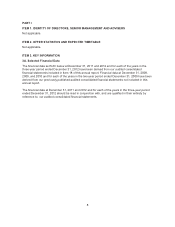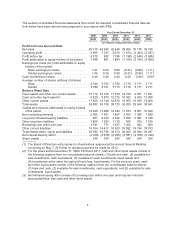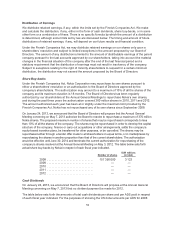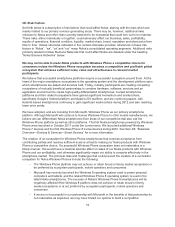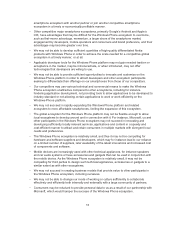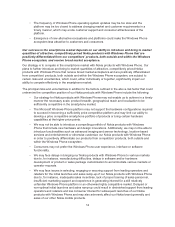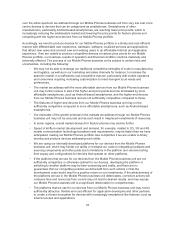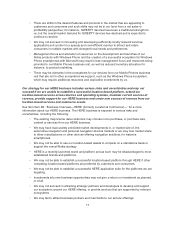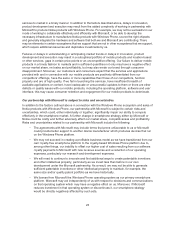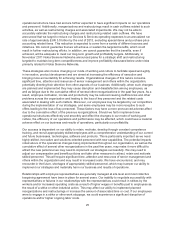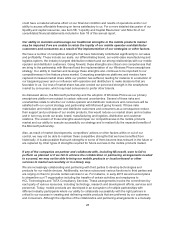Nokia 2012 Annual Report Download - page 19
Download and view the complete annual report
Please find page 19 of the 2012 Nokia annual report below. You can navigate through the pages in the report by either clicking on the pages listed below, or by using the keyword search tool below to find specific information within the annual report.• The service offering we currently provide may not be competitive or another participant may
provide a more competitive new offering in the future or new more efficient or affordable ways
of map content creation are introduced which may disrupt our own business models.
• The advertising and local commerce business opportunities we target may not grow as
expected or have the possibilities for profitable business in line with our expectations.
• The HERE business may not succeed in creating integrated social location offerings in
support of our strategic goals in smartphones, including Nokia products with Windows Phone,
or support our efforts to connect the next billion people to the Internet and information, which
would negatively affect our ability to offer compelling and differentiated mobile products.
• Any Microsoft partnership business model to integrate our location-based assets with
Microsoft’s platform to generate new sources of revenue for us may not materialize as
expected, or at all.
• If our HERE business does not generate revenue as before or new sources of revenue for us
do not materialize as expected, or at all, that business may not generate positive operating
cash flow, and this or other factors may lead to the decrease in value of our location-based
services and commerce assets and may result in further impairment charges.
• Due to changes in the competitive position of our Devices & Services business and other
factors, HERE’s profitability has been, and may in the future be, adversely affected by lower
recognized revenue from internal sales which generally carry a higher gross margin compared
to external sales.
Our products include numerous patented standardized or proprietary technologies on which
we depend and utilize for revenue generation. Third parties may use without a license and
unlawfully infringe our intellectual property or commence actions seeking to establish the
invalidity of the intellectual property rights of these technologies, or we may not be able to
maintain the existing sources of intellectual property related revenue or establish new such
sources.
Our products include numerous patented standardized or proprietary technologies on which we
depend. Despite the steps that we have taken to protect our technology investment with intellectual
property rights, we cannot be certain that any rights or pending applications will be granted or that the
rights granted in connection with any future patents or other intellectual property rights will be
sufficiently broad to protect our technology. Third parties may infringe our intellectual property relating
to our proprietary technologies or by ignoring their obligation to seek a license under our standard
essential patents.
Any patents or other intellectual property rights that are granted to us may be challenged, invalidated
or circumvented, and any right granted under our patents may not provide competitive advantages for
us. Other companies have commenced and may continue to commence actions seeking to establish
the invalidity of our intellectual property, for example, patent rights. In the event that one or more of our
patents are challenged, a court may invalidate the patent or determine that the patent is not
enforceable, which could harm our competitive position. The outcome of court proceedings is difficult to
predict and as such our ability to utilize intellectual property for revenue generation is dependent on
favorable court rulings. Increasingly, patent litigation may be commenced in new jurisdictions, for
instance if unitary patent protection regimes are introduced, where the outcome of the proceeding can
be even more difficult to predict than in established jurisdictions for patent disputes. Also, if any of our
key patents are invalidated, or if the scope of the claims in any of these patents is limited by a court
decision, we could be prevented from using such patents as a basis for product differentiation or from
licensing the invalidated or limited portion of our intellectual property rights, or we could lose part of the
leverage we have in terms of our own intellectual property rights portfolio. Even if such a patent
challenge is not successful, it could be expensive and time-consuming, divert attention of our
18


